The Waffen-SS

The Waffen-SS was the military branch of the SS. It began life as the SS-Verfügungstruppe (SS-VT), a special service troop under Hitler's overall command. On 2 March 1940, a decree renamed it Waffen-SS, or ”armed SS”. A veritable ”army within the army”, according to General von Choltitz, the SS was used to spearhead the offensives from 1943 onwards. At that time, it had the best equipment in the German army and was characterised by the very strong indoctrination of its recruits. During the course of the war, it began to recruit internationally. In 1944, for instance, the 33rd Waffen-Grenadier Division of the SS, known as ”SS Charlemagne”, was formed of French volunteers mostly from the Legion of French Volunteers against Bolshevism (LVF) and the Milice.
Known for its mass murders and large-scale acts of violence committed on the Eastern Front against partisans and the civilian population, in particular Jews, it was the SS who carried out most of the massacres against civilians in France in summer 1944. Four of the largest such massacres were perpetrated by units of the Waffen-SS: Ascq (86 men), Tulle (99 men), Oradour-sur-Glane (642 men, women and children) and Maillé (124 men, women and children). Meanwhile, the murders of women and children were committed almost exclusively by the Waffen-SS. This can be explained by the high degree of ideological indoctrination of SS members, but also by their experience of the Eastern Front, their sense of belonging to an elite unit and their experience of fighting against the partisans. That is what characterised in particular the 2nd SS Panzer Division ”Das Reich”, responsible for the massacres of Oradour-sur-Glane and Tulle. According to the German military command, this division alone executed 4 000 of the 7 900 Resistance fighters and civilians executed across France in the months that followed the Normandy landings of 6 June 1944.
The call for back-up troops
Since autumn 1943, the Waffen-SS had become less particular about recruiting foreigners. While it could certainly count on volunteers, who enlisted mainly for ideological reasons, it also used the services of roughnecks from Eastern Europe: soldiers of the ”Vlasov army” (named after the Soviet general who defected to the German side), including Georgians, Azerbaijanis and Tamils. Some of them were enlisted in France in the occupying forces; nicknamed the ”Cossacks” by the Resistance, they displayed unparalleled ferocity.
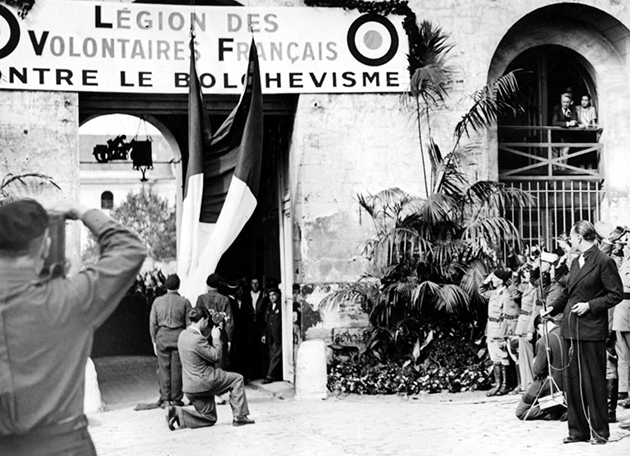
Le siège de la LVF, bureau de recrutement pour le front de l'Est. Les membres de la LVF s'engageront dans la Waffen SS. Copyright Collection particulière
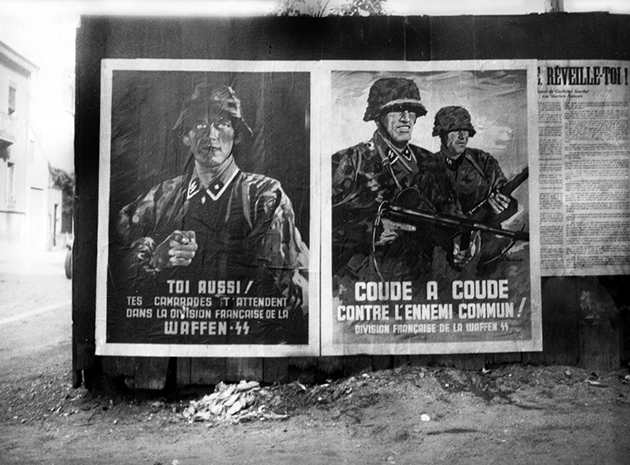
Affiches de propagande pour le recrutement dans la Waffen SS. Copyright Collection particulière
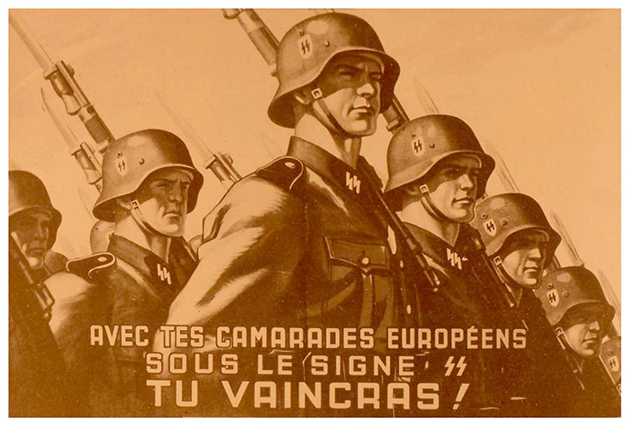
Affiche de recrutement de la Waffen SS. Copyright MRN
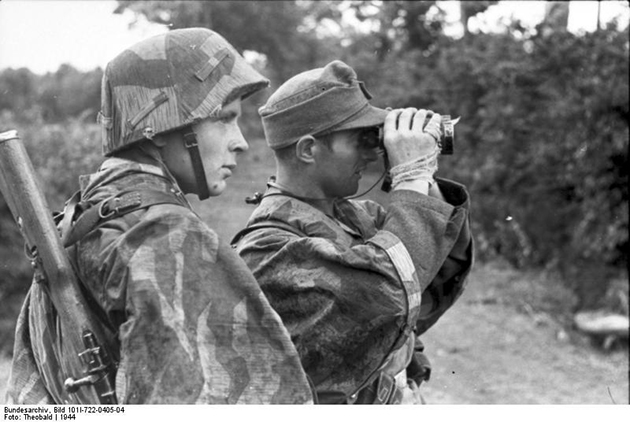
Deux soldats de la Waffen SS, été 1944, en France. Copyright Archives allemandes
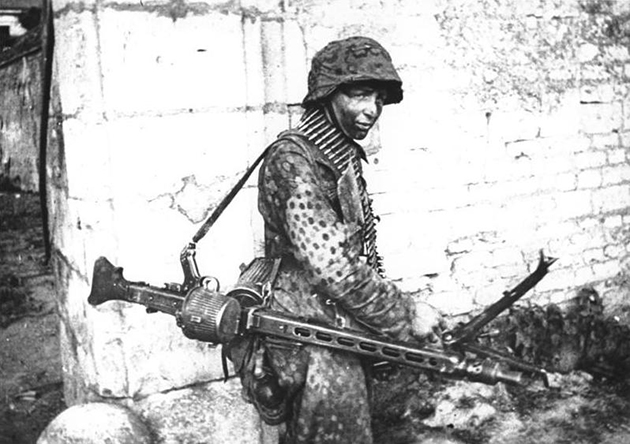
Un soldat de la Waffen SS lors de la bataille pour Caen, été 1944. Copyright Archives allemandes
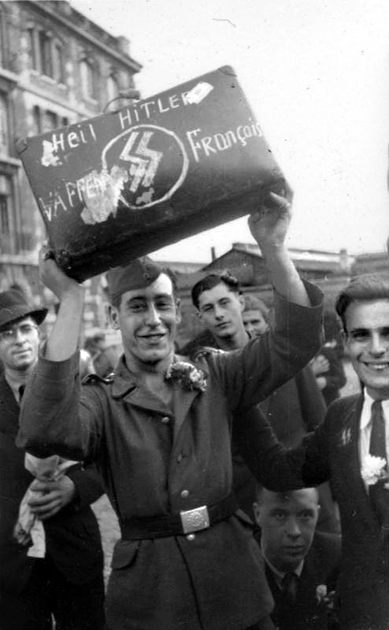
À Paris, octobre 1943, un volontaire français pour la Waffen-SS. Copyright Archives Allemandes
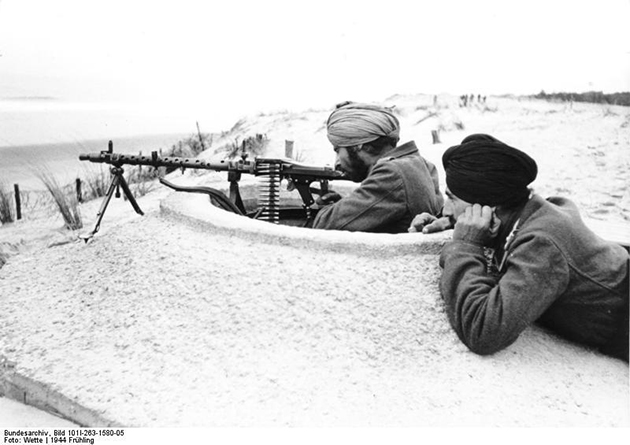
21 mars 1944, deux soldats indiens recrutés par l'armée allemande dans une position sur le Mur de l'Atlantique, printemps 1944. Copyright Archives Allemandes
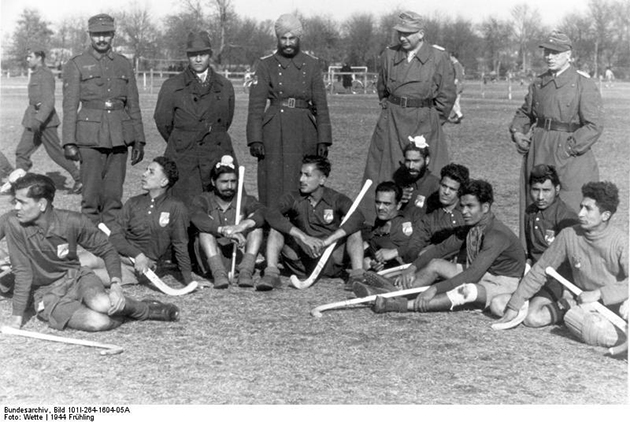
Des Indiens de la Légion libre indienne de l'armée allemande, après un match de cricket à Bordeaux, en mars 1944. Copyright Archives Allemandes
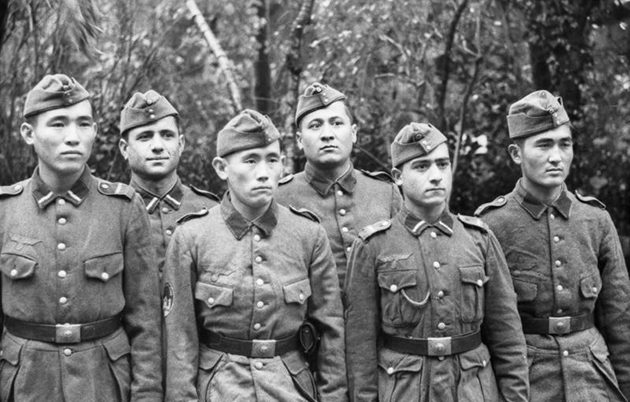
Des Turkmènes, prisonniers de guerre, enrôlés par l'armée allemande, Normandie, 1944. Copyright Archives Allemandes
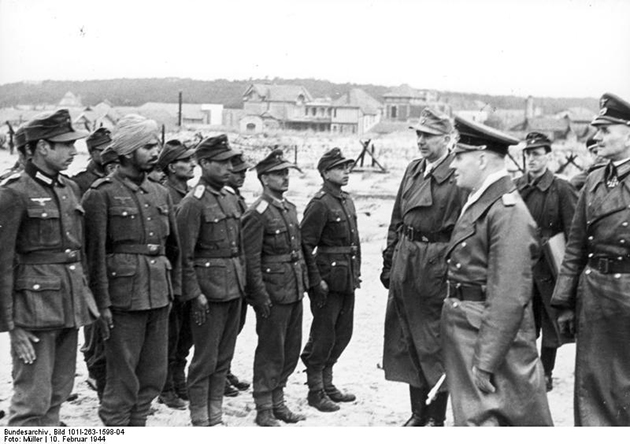
En février 1944, le maréchal Rommel passe en revue une unité indienne de l'armée allemande, sur le mur de l'Atlantique à Lacanau, en Gironde. Copyright Archives Allemandes
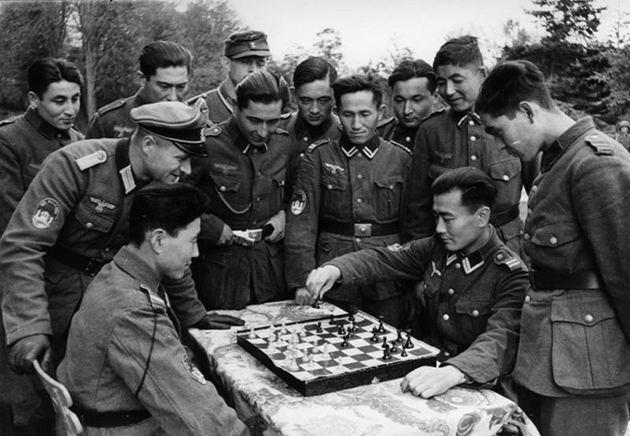
Soldats d'une unité de supplétifs allemands, originaires du "Turkestan" (Asie centrale soviétique), en France, 1944. Copyright Archives Allemandes
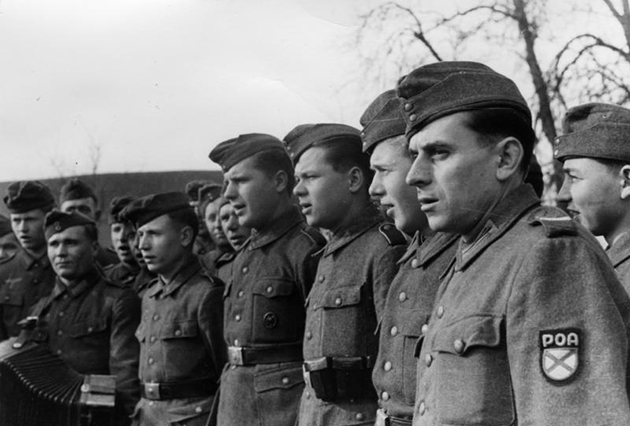
Soldats soviétiques de l'armée de Libération (ROA), prisonniers de guerre enrôlés dans l'armée allemande, France (1944). Copyright Archives Allemandes
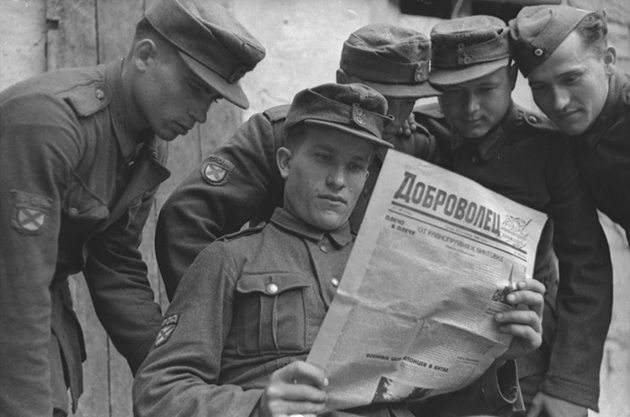
Soldats soviétiques sous l'uniforme allemand, membres de l'armée de Libération russe (ROA). Ils lisent le journal "Volontaire" publié par la propagande allemande en collaboration avec des journalistes russes. Haute-Normandie, été 1944. Copyright ECPAD. Réf. : DAT 2713 L09

